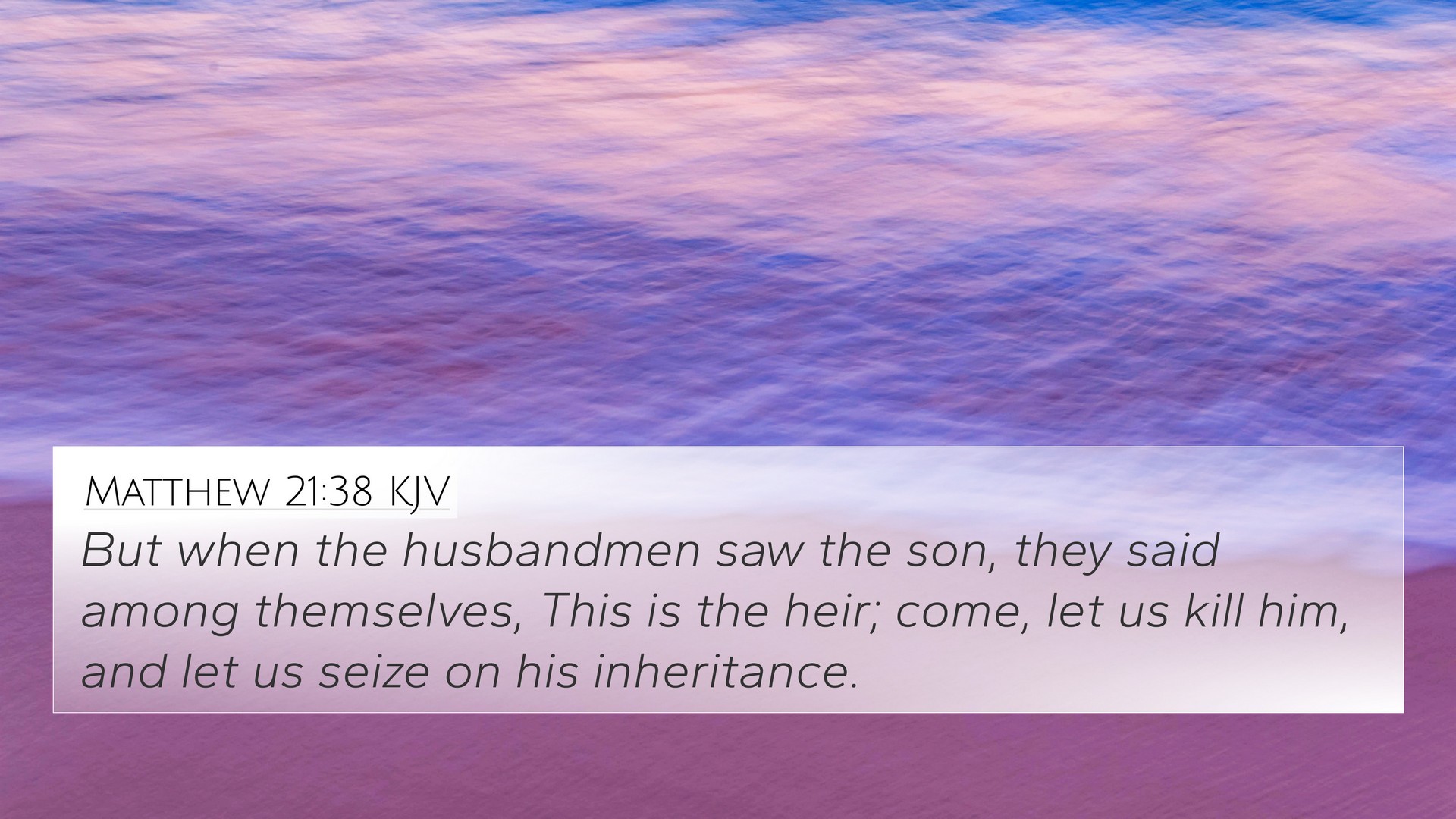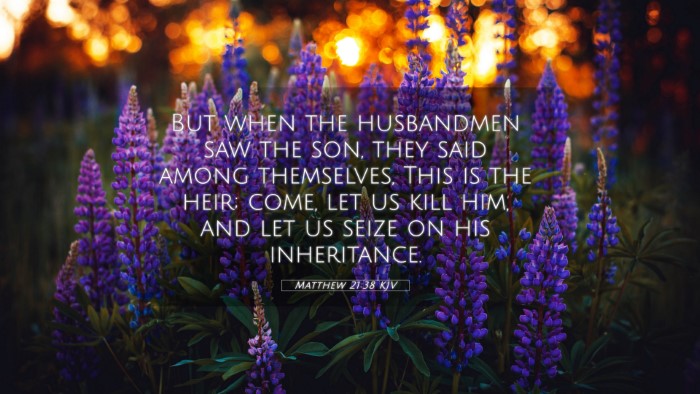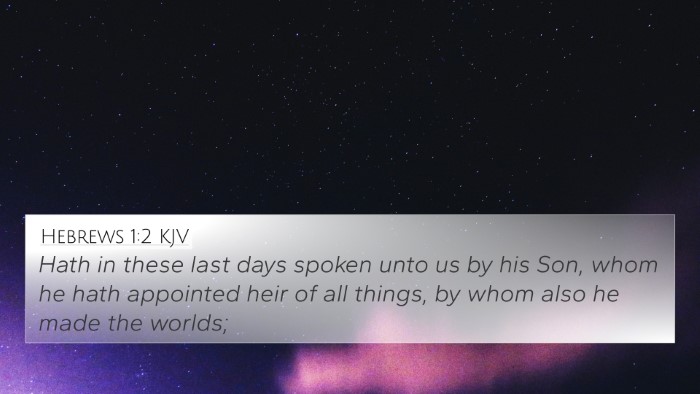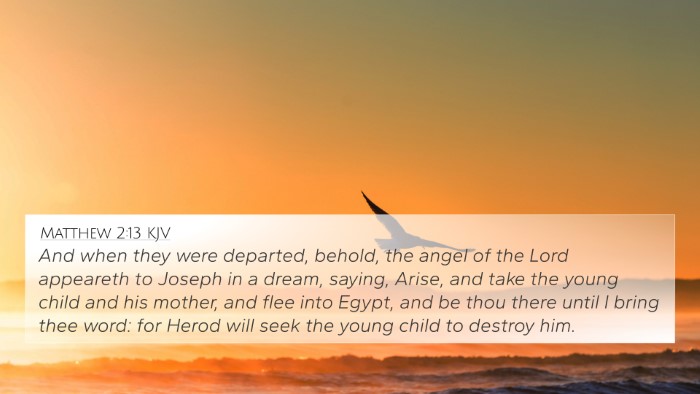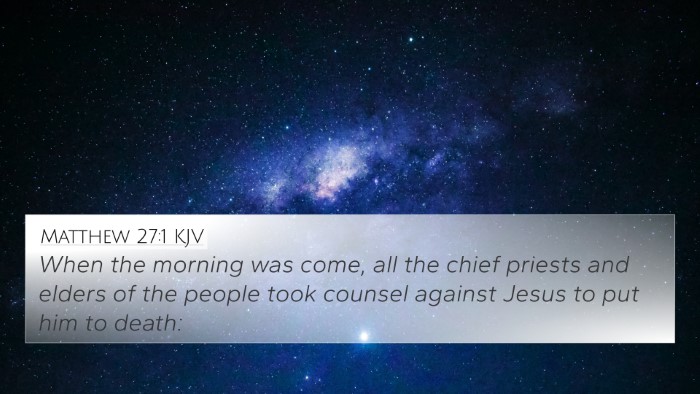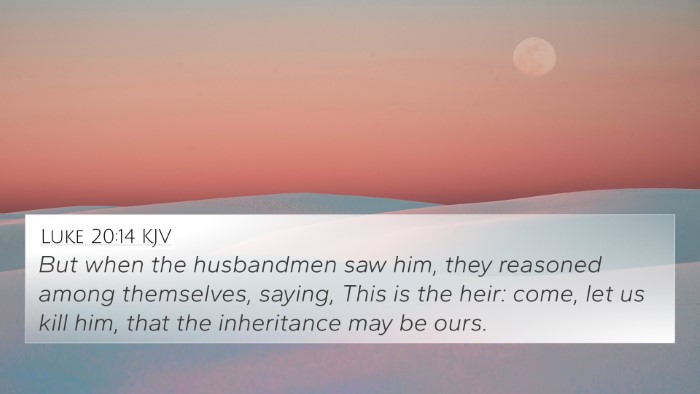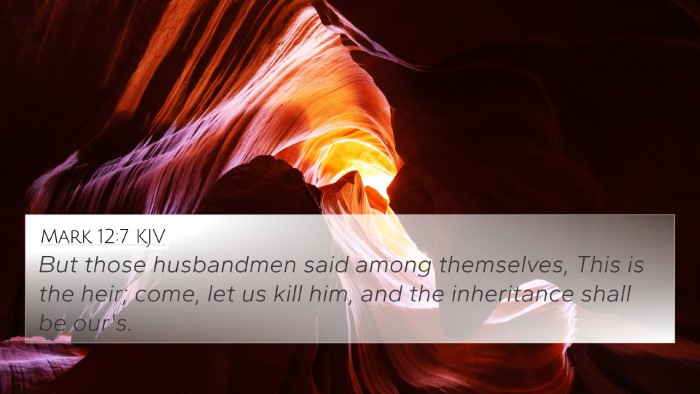Understanding Matthew 21:38
Verse: "But when the husbandmen saw the son, they said among themselves, This is the heir; come, let us kill him, and let us seize on his inheritance." (Matthew 21:38)
Summary of the Verse's Meaning
Matthew 21:38 recounts a parable told by Jesus, illustrating the relationship between God and Israel. In this metaphor, the landowner represents God, the vineyard symbolizes Israel, and the husbandmen signify the religious leaders. The verse points toward the rejection and eventual murder of Christ by these leaders, portraying their refusal to recognize and honor the Son of God.
Interpretations from Public Domain Commentaries
This verse has been widely interpreted by biblical scholars such as Matthew Henry, Adam Clarke, and Albert Barnes. Below is a combined insight from these commentators.
Matthew Henry's Commentary
Henry emphasizes the rebellious nature of the husbandmen. Despite their initial stewardship, they become aware that the son is the heir. Their acknowledgment of his identity leads them to a malicious conclusion: to kill him. This reflects the broader theme of Israel’s leaders foreseeing the divinity of Jesus yet choosing to reject Him out of jealousy and greed.
Albert Barnes's Commentary
Barnes notes that this verse demonstrates the blatant evil in the actions of the husbandmen. It illustrates how greed can cloud judgment—rather than accepting their roles and responsibilities, they plot to kill the son to claim what is not theirs. This serves as a warning against the dangers of spiritual blindness and the refusal to recognize God’s authority.
Adam Clarke's Commentary
Clarke reflects on the motivation behind the husbandmen’s actions. They are portrayed as aware of their unrighteousness yet still act in defiance. This defiance symbolizes Israel’s rejection of God’s messengers throughout history, culminating in the rejection of Christ, thus linking to broader themes within the scripture about the consequences of turning away from God’s will.
Cross-References and Thematic Connections
Matthew 21:38 can be cross-referenced with several significant passages in the Bible that deepen its understanding:
- Isaiah 5:1-7: The Song of the Vineyard—Where God speaks of Israel as His vineyard.
- Psalm 2:1-3: A prophecy concerning the rejection of God's anointed.
- Matthew 21:33-34: The context of the parable expands on the mistreatment of God’s messengers.
- Luke 20:13-14: A parallel account of the parable that emphasizes the husbandmen’s intentions.
- Mark 12:1-2: Echoes the same parable with slight variation, illustrating the same rejection theme.
- John 1:11: "He came unto his own, and his own received him not," highlighting the rejection of Jesus.
- Acts 4:11: Acknowledgment of Jesus as the stone rejected by the builders, tying back to the parable.
- Hebrews 1:2: Refers to God speaking through His Son, linking to the authority of Christ as the heir.
- Romans 11:20-22: Discusses the stumbling of Israel as they reject faith, relating to their fate in the parable.
- 1 Peter 2:4-8: Describes Jesus as the cornerstone rejected, connecting it to the theme of rejection in Matthew 21:38.
Thematic Analysis and Connections
The parable of the wicked husbandmen is not just a historical account but serves as a timeless warning against spiritual complacency and rebellion against divine authority. It encourages deeper thematic study linking Jesus' teachings to the Old Testament, demonstrating a direct line from prophetic warnings to New Testament fulfillments.
Tools for Cross-Referencing
- Utilizing a Bible concordance helps in finding related verses efficiently.
- A Bible cross-reference guide provides structured insights into similar scriptures.
- Having a cross-reference Bible study enhances understanding of relational scriptures.
- Implementing cross-referencing Bible study methods allows for thematic exploration.
- Using Bible reference resources aids in thematic and contextual study.
Conclusion
Matthew 21:38 is a profound verse illustrating the rejection of Christ and the consequences of spiritual disobedience. By examining cross-references and utilizing biblical study tools, readers can enrich their understanding of this and related verses, grasping the overall narrative of scripture.
